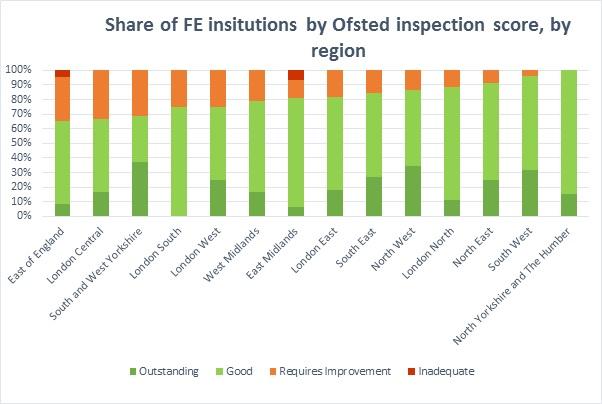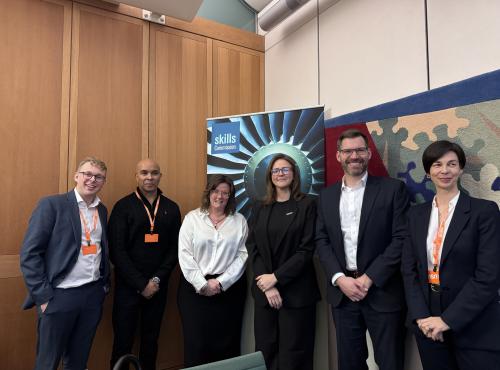EduSkills Blog: Let’s be positive about Further Education infrastructure
Maja Gustafsson | Researcher Education and Skills
It is well known that the FE and skills sector faces multiple aims and targets. Within the sector, there is a significant variety of providers, engaged age groups, and statutory and local requirements. This means – unsurprisingly – that a common and singular purpose for the sector is hard to identify.
Not only do principals, chief executives and teachers simply have to educate their learners, but they also have different expectations including: social inclusion; aligning skills provision with employer need; and dealing with fierce competition for other actors in the education sector broadly and the FE sector specifically.
In spite of this, the current situation with inequalities and social inclusion in the UK is unsustainable, both in terms of socioeconomic disadvantage in a given place and the wider regional inequalities. For instance, a cross-national study by the Equality Trust found that both income and wealth inequality in the UK is among the highest in the developed world. Regional inequality is also stark, and a new independent inquiry has been launched into the matter. Indeed, according to the chair, Lord Kerslake:
There will always be differences between places, but Britain has some of the most extreme regional disparities in the developed world – these impose great costs on society, and handicap our economic performance and productivity.
What is often less considered in the debate is just how the sector could change. But this requires an understanding of our current situation.
One way of looking at how well the FE sector is doing at providing a consistently high quality service across the country is to look at the Ofsted inspection scores. Ofsted inspectors make an overall judgements on: the effectiveness of leadership and management; quality of teaching, learning and assessment; personal development, behaviour and welfare; and outcomes for learners. If delivered with accuracy and with consistently good quality, this framework would reasonably give a good overall picture of the provider performance.
The available Ofsted inspection score data is illustrated by region in the graph below. Towards the left are the regions with the lowest share of outstanding and good FE institutions, and towards the right are the regions with the highest share.

In North Yorkshire and the Humber no FE institutions have been judged as below ‘good’. Conversely, in the East of England, only 43% of institutions are graded ‘requires improvement’ and ‘inadequate’.
The graph also shows that provision quality can vary dramatically among FE institutions within the same region. For instance, South and West Yorkshire has the highest proportion of outstanding institutions whilst also having the third highest share of institutions that require improvements.
Nonetheless, inter-regional performance is not severely unequal as the graph confirms that all regions have a great number of outstanding and good FE institutions. While the institutions that require improvements should naturally work towards upgrading quality, it is good that we have this foundational infrastructure.
This ought to give hope to a sector that often reports on financial struggles and troubled Chief Executives. It should also show that there is a good foundation for a consistently high quality provision in all regions.




